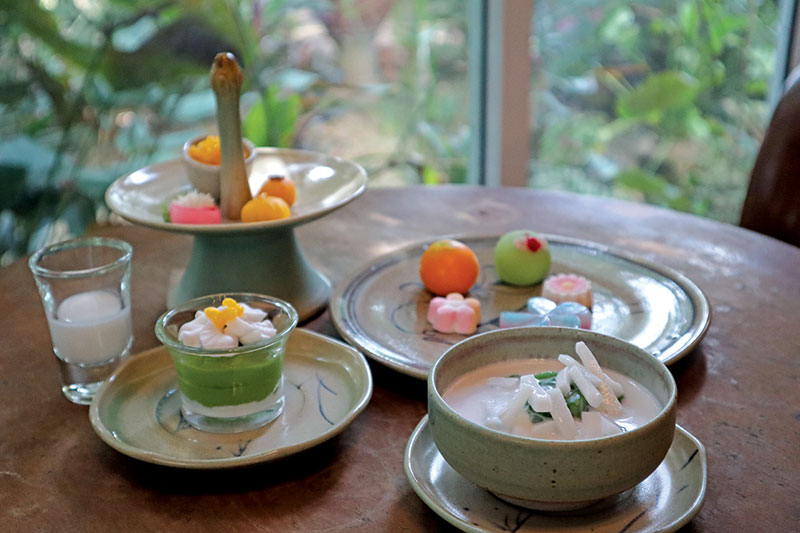
A Dive into Sukhothai’s Culture, History, and Flavours
Explore the hidden depths of this northern province, where food, art and traditions weave a unique Thai tapestry
Words and Photos: Pinanong Panchuen
The serene beauty of Sukhothai, Thailand’s first capital, is synonymous with ancient temples, timeless art, and the Thai nation’s deep-rooted history. Yet just a short distance away from this Unesco Heritage Site, the treasures of Sawankhalok and Si Satchanalai testify to the local ingenuity and vibrant everyday life of this northern province.
Though often overshadowed by the archaeological riches of their neighbour, Sawankhalok and Si Satchanalai still pulse with Sukhothai’s centuries-old legacy of culinary traditions, textile crafts, and creativity.
Together, these two destinations offer travellers a rich journey through Thailand’s past and present, unveiling intimate connections between tradition and modern culture.
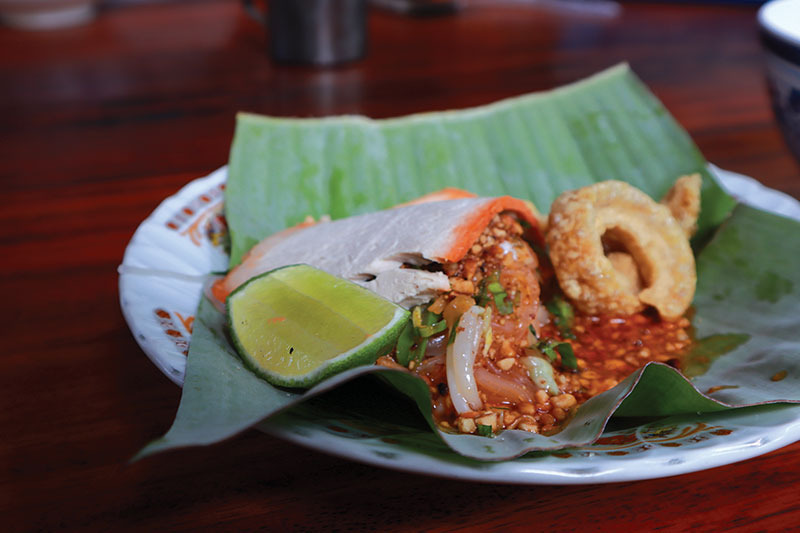
Khao Poep Yai Krueang: Culinary Legacy of Sukhothai
No ordinary dish, Khao Poep Yai Krueang is a culinary time capsule created 50 years ago by Yai Krueang Wongsaranasin, inspired by a simple craving for noodles. A thin sheet of rice flour is steamed and then folded (“poep”) over vegetables, eggs, and succulent red pork before being drowned in savoury pork bone broth.
A visit to Ban Na Ton Chan, the home of this historic dish, allows travellers to see how it is made and understand how food traditions preserve not just flavours but also Sukhothai’s strong sense of community.
For another local twist on Thailand’s familiar noodle dishes, try Khao Bae: delicate rice noodles served with red pork and crunchy peanuts.
Location: Ban Na Ton Chan,Si Satchanalai District, Sukhothai
Open daily 8.30am to 5pm.
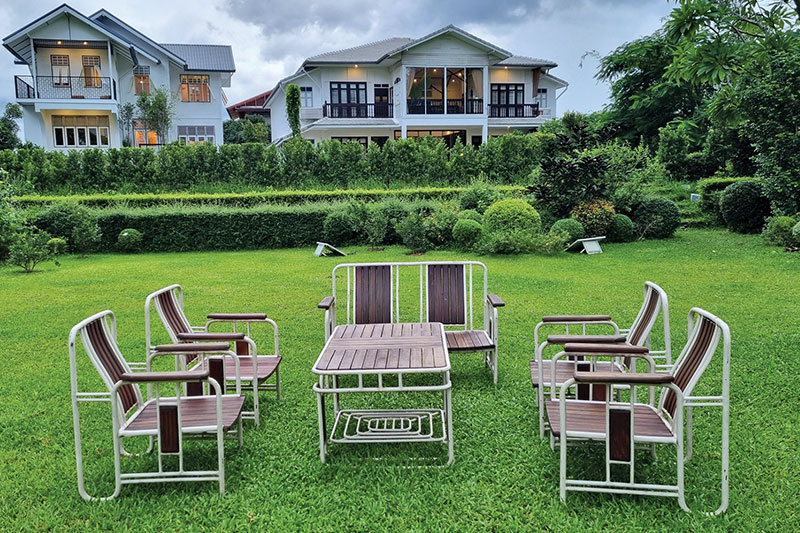
Chomprang House: Between History and Modernity
Chomprang House is more than just a boutique hotel; it’s a tribute to the balance between tradition and modernity in Sukhothai.
Conceptualised by Sophon Plueksang, a local deeply connected to his hometown, Chomprang House embodies his dream of reviving a forgotten heritage. Inspired by the iconic silhouette of the Prang at Wat Phra Si Rattana Mahathat, the hotel merges classic architecture with the comforts of modern living.
Sophon chose the plot for its proximity to Sukhothai’s ancient temples, and the hotel’s design mirrors the beauty and elegance of these historic structures. The traditional homes he transformed into Chomprang House serve as a bridge between past and present, with warm, homely elements balanced by meticulous service.
Guests can enjoy dishes made from the freshest local ingredients at the in-house restaurant or take afternoon tea while feasting on the view of the ancient prang. Comfort, tradition, and historic surroundings make Chomprang House more than just a place to rest – it provides a momentary escape into Sukhothai’s golden age.
Location: 98/1 Si Satchanalai District, Sukhothai
Facebook: Chomprang House

The Twelve Cutting Units: A Fusion of Art and Hospitality
Sukhothai’s famed Twelve Cutting Units is an artistic sanctuary that doubles as a unique dining and lodging experience. Named after the traditional Tai Phuan weaving pattern, this establishment celebrates the artisanal craftsmanship for which this region is renowned. The intricate design, with its 12 hooks forming the iconic motifs found on traditional Sukhothai textiles, serves as the foundation for this culturally immersive space.
Twelve Cutting Units welcomes guests into a world where art and tradition harmonise. The restaurant offers elegantly prepared rustic and flavourful dishes that reflect the simplicity of Sukhothai’s culinary heritage. The three rooms of this boutique gem showcase the traditional aesthetic of the region, connecting patrons with the local artistry, textiles, and warmth that define Sukhothai.
In a place like Sawankhalok, where historical resonance runs deep, this fusion of art, hospitality, and community creates a living museum of the region’s identity.
Location: Yan Yao, Sawankhalok District, Sukhothai
Open daily 10am to 8pm.

Ban Mayura Tea House: Where Tradition Meets Innovation
Ban Mayura Tea House redefines the Thai tea experience with its unique blend of local tradition and contemporary presentation. Named after its founding family, Ban Mayura captures the essence of Sawankhalok’s charm through the pairing of delicate Thai sweets and artisanal teas. Co-founder Pop Wutthipat and his partner Narapong Mayura returned from bustling Bangkok to their hometown with a mission – to make tea a more accessible, everyday pleasure.
Their tea house emphasises simplicity, offering signature brews like Cha Suan Sawan (Paradise Garden Tea) and Cha Suan Dok Mai (Flower Garden Tea), made with local herbs and flowers. The experience extends beyond the tea itself – beautiful Thai sweets like Kanom Alua and Kanom Sam Pun Nee, present visitors with a taste of Sawankhalok’s culinary artistry.
Stepping into Ban Mayura feels like entering a serene retreat. The focus here is on encouraging visitors to slow down, savour, and appreciate the simplicity of good tea and delightful sweets amid sawankhalok’s peaceful ambience. It’s a perfect fusion of local pride and modern tastes, making Ban Mayura a must-visit for those who want to experience Sawankhalok’s softer side.
Location: Pracharat Road, Sawankhalok District, Sukhothai
Open daily 11am to 6pm (closed Wednesdays)
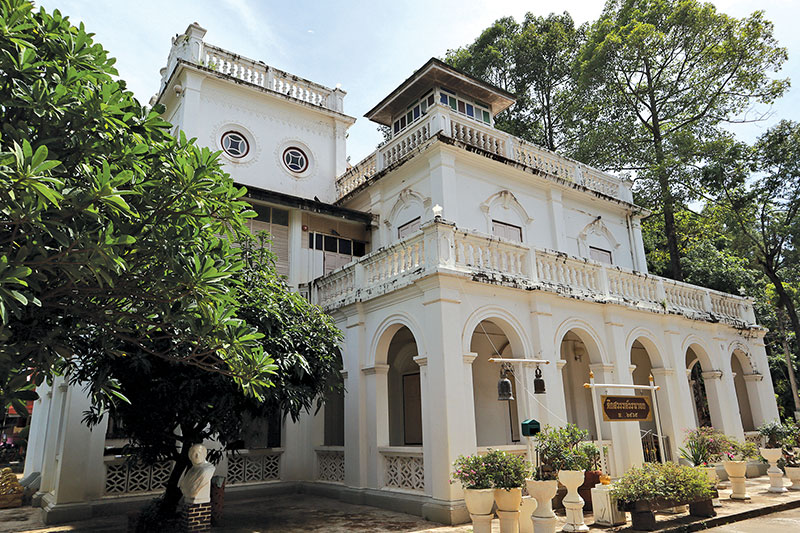
European-Style Kuti at Wat Sawankharam: An Architectural Curiosity
Among the historical wonders of Sawankhalok stands a unique relic – the European-style kuti at Wat Sawankharam. This three-storey building is a rare example of Western architectural influence in Thailand’s northern provinces. Constructed in the early 20th century by Luang Kamhaeng Singhanat, an architect who studied in Germany, the kuti reflects the merging of Thai religious architecture with European design principles.
The kuti’s elegant design, with its towering facade and intricate woodwork, tells a story of cultural exchange and modernisation during a period when Thailand was engaging with Western powers. Inside, the space serves a dual purpose: housing the relics of Phra Buddha Luearit and acting as a living example of architectural innovation in rural Thailand.
The kuti introduces visitors to the blend of Eastern and Western influences that shaped Sawankhalok’s historical trajectory. It stands as a reminder of Thailand’s openness to global ideas balanced with the preservation of its distinct spiritual heritage.
Location: Sawankharok District, Sukhothai
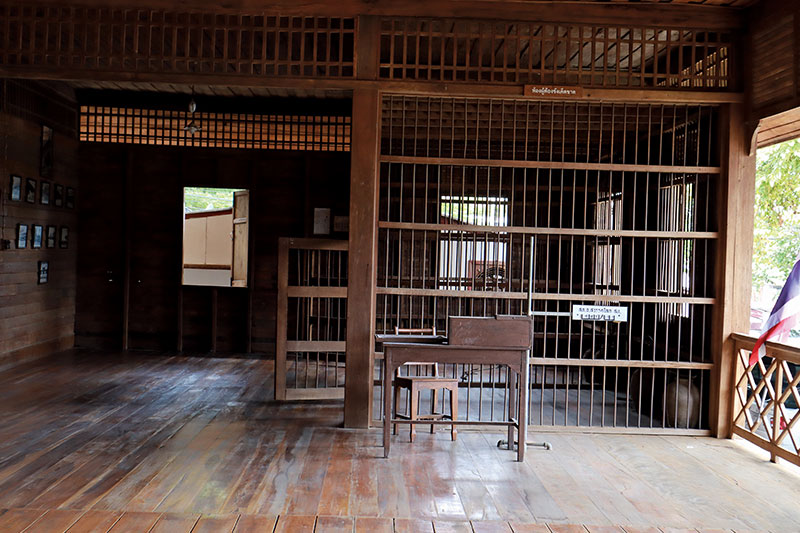
Sawankhalok Polic Station: A Historical Relic
Overlooking the Yom River, Sawankhalok Polic Station is a living piece of history. Built before 1939, when Sawankhalok was still a province, this wooden structure is one of the few surviving examples of early government architecture. Its hip-roof design and teak wood construction give it an air of timelessness, evoking the charm of a bygone era. Today, the station stands as a tribute to the diligent officers who served in this region during its provincial days. The site is not only a place of historical significance but also a reminder of Sukhothai’s enduring commitment to preserving its heritage.
Location: Sawankhalok District, Sukhothai
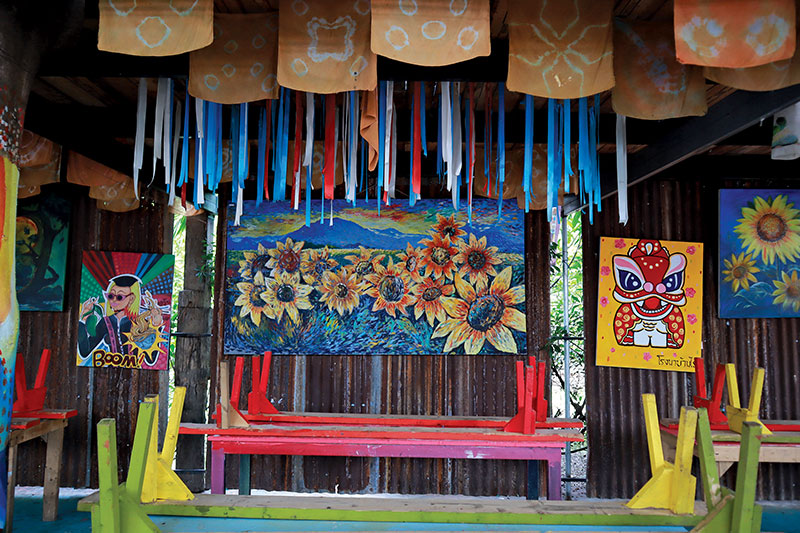
Rong Na Baan Rai Art Farm: Sukhothai’s Creative Heart
Nestled in Sawankhalok, the Rong Na Baan Rai Art Farm is a creative haven where art, nature, and local life intersect. Founded by renowned author and poet Sanya Panichyayavech, the farm functions as an art studio, a workshop space, and a rural retreat. Sanya, better known by his pen name Nok Kawi, envisioned a place where visitors could engage in artistic activities while connecting with the age-old rhythms of rural life.
Workshops at Rong Na Baan Rai range from papermaking to traditional cookery, offering hands-on experience that reflects the artistic and agricultural heritage of the area. The farm is an ideal destination for travellers seeking more than just passive sightseeing – it’s an opportunity to create, learn, and immerse oneself in the essence of Sukhothai’s artistic traditions.
Visitors leave the farm with more than just memories, carrying with them a deeper understanding of how creativity is interwoven with the daily life of the people in this part of Thailand. Through the lens of art and nature, Rong Na Baan Rai offers a fresh perspective on Sawankhalok and Sukhothai’s evolving cultural story.
Location: Wang Mai Khon, Sawankhalok District, Sukhothai
Facebook: rongnabaanrai
